Our recent visit to the Drôme region of France confirmed that the garlic heritage and expertise in this region is exceptional. Three certified organic growers that we work with in the area where the Rhône and the Drôme rivers meet have more than 50 years of specialist garlic growing between them.
Field-trials for seed.
Our first stop was with the leader of the local growing group, which comprises almost 800 hectares of garlic, almost 200 of which is certified organic. The care, attention, innovation and panache that Pierot gives to the development and multiplication of seed garlic was stunning. The group’s field trials where plants are being selected for very specific qualities and characteristics is a masterclass in observational precision.
Producing clean, vigorous seed garlic of various types for varying terroirs is practise that this group have been perfecting with a dedication that is closer to art than it is to science. An example of this is where one of the team had noticed during prior growing seasons that a few plants displayed a deeper green colour, with a shinier, thicker leaf texture. They are multiplying this to see if it might be a natural defence against ‘rouiller’ (rust, in English). Another example was of a hardneck of such size and structure that it looked like elephant garlic, but was actually a porcelain, similar to our organic Caulk Wight, a stunning plant producing chest-high scapes (see photo).

Challenges with weed.
Crossing the river at Crest, we visited Alexander, who grows organically on 30 hectares. As with all-natural horticulture, the control of weeds is a challenge, requiring skilled and timely mechanical intervention instead of synthetic herbicides. Alexander, like many of the organic growers in this growing group, use a combination of spring-tines immediately after planting, followed by hoes and finger-weeders. There was much discussion on the techniques needed to deliver the optimum balance of disturbance for the competing plants, and protection of the garlic. As you may know from your own garden or allotment, bruising or damage to garlic leaves can open the plant to stress.

We were very pleased to be introduced by Alexander to the videos of a fellow garlic grower: Gael Blard, who posts information on the subject of natural weed control . We’re not convinced that stepping out of the tractor whilst weeding is sensible though!
Perhaps robots may have a place in the future of garlic weed control as more growers switch to organic?

What garlic does and doesn’t need.
Heading back towards Valence, we arrived in open, level ground with large fields and sweeping views. Michelle has been farming garlic organically here for decades and has the relaxed composure of someone who is very in tune with his plants and fields. On arrival Michelle showed us handfuls certified organic seed that we will be buying from him to plant here on the Isle of Wight this October. The bulbs were healthy with good clove formation, despite them also having one of the wettest winters he has ever experienced.

When we walked the garlic plots together, the plants appeared to have suffered badly from rust, much like our crop, because of the relentless moisture through the growing season. On pulling the bulbs, which were due to be harvested in the coming week, we noticed that despite the desiccated, speckled pale leaves, the bulbs themselves were a very good size and perfect clove formation. This was large-scale proof that if the crop is free of competition, in good soil and nutrition is cared for, yield can be good even with rust. Others in the regional growing group have experimented with a foliar calcium treatment as a barrier to rust, but Michelle chose to omit this from his process and between the group, they are evaluating efficacy. It will be interesting to get the comparison data after all harvests are in.
Paradise indeed.
Climbing a few hundred meters in altitude as we weaved northeast towards the mountains of the Drôme – Isère border, we headed to a family who have been farming the foothills since 1921. After losing too many sheep to wolves, they turned to garlic and vines and have not looked back since. The garlic farmers in the river valley had commented that we were heading to paradise when we told them of our destination. They were not wrong; the landscape was stunning and the air crisp and clean.

Gautier, the organic grower here was so focussed and passionate about his garlic, it was a joy to be in his presence. He too had chosen not to employ the calcium defence for rust, in part because they suffer less from this fungus in the region and in part because he prefers to maintain a clear view of the leaf. He seemed to be able to read his plants in this way, and the specialism of growing organic seed garlic to farmers, rather than consumption garlic to the open market has attuned his focus on vigour. We asked him to distil the most critical techniques and observations that lead to producing first class organic seed garlic and he exhaled, looked skyward and then offered this sequence, delivered in English that was better than our French…
First, the soil, it must be alive.
Then the planting, good contact on the cloves will defend them.
Then immediately weeding, weeding, weeding, even before you see the weeds.
More weeding, food and water.
Keep looking, every day.


Advice and help to heed.
Before visiting these inspiring garlic specialists in France, we had been to see Will at Living Larder. He is an organic vegetable grower, less than two miles from The Garlic Farm. We quizzed him about weed control as were began our second year of fully organic garlic growing. He showed us the spring tine he uses to kick out the tiny seeds as they chit. We also had some great support from Riverford, whose harvest manager Ed sent us details of the finger weeder set-up they use. Seeing these very same machines, from the same manufacturer, used by all the organic garlic growers that we visited in France felt like a very symmetrical experience. Our immediate neighbour Will, and the team at Riverford had given us the initial insights, and the French growers showed us the application at scale. We’re hopeful that this community of organic farmers will continue to help us develop our own skills of farming without synthetic input.
















